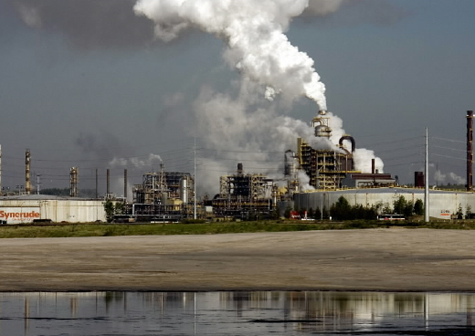A scientific panel said Tuesday that weaknesses in measuring pollution from the Alberta oil sands must be corrected. Pollution is one argument against the oil sands development. Global News takes a look at the pros and cons involved in developing the oil sands.
Pros:
“¢ The oil sands have made Canada the Number One foreign supplier of oil to the U.S. This has become a major factor in the close economic partnership shared by the two countries.
“¢ The oil sands provide Canada with a relatively secure source of energy. While Canada’s oil supply isn’t unlimited, Canadian reserves are the second-largest on the planet.
“¢ The oil sands have spurred massive economic growth in Alberta. Despite the recent economic downturn, the Alberta oil sands continue to generate huge profits and provide thousands of jobs.
Although many new projects have been postponed, other producers in the area are moving forward with expansions. Operators are expected to increase production to two million barrels of oil a day by 2013, up from 1.2 million barrels a day this year.
“¢ A large part of the Alberta oil sands mining operations involves clearing trees, brush, topsoil, sand and clay that sit on top of the oil sands deposit. But steps are being taken to mitigate the effect this has on local animal species.
The topsoil and muskeg are stockpiled so they can be replaced and the rest of the material is used to reconstruct the landscape in areas where mining is complete.
Cons:
“¢ As far as extraction methods go, the ones used in the Alberta oil sands are among the most carbon-intensive. When compared to the average crude oil processed in the United States, greenhouse gas emissions from the Alberta oil sands are approximately five to 15 per cent higher because the oil is too deep to be extracted using traditional methods.
“¢ The Athabasca Delta, where the oil sands are located, is a breeding ground for hundreds of species of birds. But these breeding grounds are destroyed to clear the land for oil production.
Although many of these materials are stockpiled to be replaced when mining operations are completed, for many of the current species, it may be too late.
“¢ Some environmentalists worry that clean-burning fuel from the Mackenzie Gas Project (a natural gas pipeline system set to be built along the Mackenzie Valley of the Northwest Territories) will be diverted to oil sands refining operations.
The construction of the pipeline itself destroys forest, but such a move could also fuel further development of the tar sands. These factors could combine to actually increase Canadian greenhouse gas emissions.
“¢ Reserves are limited. In total, global reserves sit at around 1.3 trillion barrels, equivalent to about 40 years of reserves at current consumption rates.
“¢ Some critics believe that our dependence on the oil sands (they account for 47 per cent of the total amount of oil produced in Canada) is simply putting too many eggs in one basket.




Comments